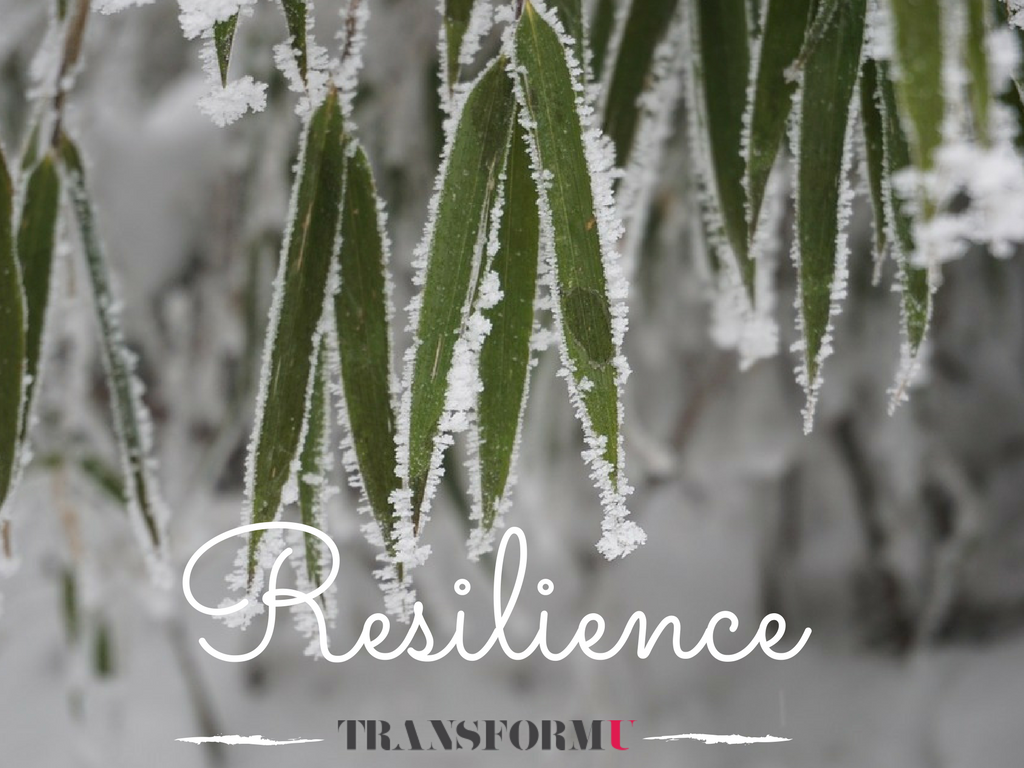In time even the strongest wind tires itself out, but the bamboo remains standing tall and still. – Japanese Proverb
What inspires you?
When you think of unforgettable stories that have stirred you to keep going, to be more, to do more, what are those stories?
For me personally my heart is touched by hearing a hero’s journey – a strong resilient account of overcoming. These stories not only inspire me but they leave an indelible stamp deep within my heart. That stamp encourages me to pick myself up and move on when difficulty or adversity hits.
In today’s post I am going to share with you 3 powerful skill sets you can learn from the bamboo to cultivate a resilient mindset; one that is especially needed during this rebuilding time in our world.
Inspiration from Nature
I am so grateful that I have a rich inner circle of resilient people as mentors in my life. These people, whether living or deceased, have left a permanent stamp on me. In addition to my strong mentors, however, I also get inspiration from miracles found in nature.
Think about it, have you ever examined the complex society of the leafcutter ant, or marveled at the massive 3,000 plus mile journey of the monarch butterfly, or witnessed the incredible resiliency of the bamboo tree?
Years ago, I suffered from very serious health issues – too numerous to mention. In addition to these illnesses, I also had severe chemical sensitivities including a fungal infection on my lungs which drastically limited my lung capacity.
In my desperation to regain my health, I starting looking at common toxins found in my home. The first big project was to replace the old carpet with wood flooring. However I quickly discovered that most hardwood floorings were filled with toxic VOCs and formaldehyde. I felt trapped, how could I make my house less toxic and find some relief?
The Resilient Bamboo
A doctor told me about another flooring option: bamboo. Before this time, I had not heard of bamboo being used for flooring. I was only familiar with the majestic bamboo forests. After discovering the brilliant qualities of the bamboo, it not only replaced the old carpet in my house, it became a symbol of resilience and strength to me.
What skill sets can the bamboo teach us about building a resilient mindset?
Adaptability
One of the most impressive qualities of the bamboo is its adaptability; its capacity to spring back into shape. While most trees have strong roots, they are still subject to breaking or becoming uprooted. Not the resilient bamboo; it sways with even the slightest breeze but its trunk stays firmly rooted in the ground below.
Infrastructure
Bamboo has shown itself to be structurally sound and incredibly resilient – even to earthquakes. Houses made with bamboo have been known to withstand in excess of an 8.0 magnitude quake. The bamboo’s unique internal composition-a high silica content and strong sectional anatomy only enhances its structural integrity.
Growth
The bamboo is committed to growth. Bamboos are one of the fastest-growing plants on earth. Certain species of bamboo can grow up to 4 feet in a 24 hour period. And a pole of bamboo can regenerate to its full mass in only 6 months.
How does this become relevant to you, especially during this time of rebuilding in our nation and the world?
Let’s look at how you can add new skill sets to your toolbox to build a resilient mindset and thrive like the bamboo.
3 Skill Sets to Build a Resilient Mindset
Skill Set #1: Learn to Adapt
Resiliency is the capacity to recover from difficult situations. Life is a constant ebb and flow of mountain tops and valleys. To be successful personally and professionally, you must become really good at learning new things and being flexible in adapting to change.
Most successful people want to change but they don’t want to let go. They are fearful that by becoming flexible, they will lose their cutting edge. The most dangerous words I hear all the time are, “I’ve always done it this way.” It takes courage to be vulnerable and seek change.
The good news is that adapting to change is a life skill that can be cultivated. In order to move the needle closer to what you want in life, you not only can’t be afraid of change – you must willingly embrace new concepts and innovations.
There is a myth that being flexible is showing weakness or caving in; settling or just getting by. The exact opposite is true. Adapting is sharpening strategies for dealing with the unknown; to go to places not suitable for the faint of heart. Adapting is refusing to put up with the status quo.
Skill Set #2: Build a Strong Personal Foundation
What is your plan for your own personal growth and development? During this time of unprecedented change in our lives, you must become more in order to face change and rebuild.
To create a new and improved normal, you must have a strong personal foundation. Building your internal personal infrastructure is an essential first step towards maximizing your performance. Those who have worked hard to build their personal infrastructure know how to overcome obstacles and navigate change. They understand themselves: they have a clear grasp of what drives them and how to operate out of their strengths zone.
They are very familiar with their personality traits, communication styles, values, and needs. They live their lives out of a sense of purpose which creates a more meaningful life.
Skill Set #3: Cultivate a Growth Mindset
Do you have a fixed or a growth mindset? Do you know the difference between a fixed mindset and a growth mindset? People with a growth mindset are more resilient. They view obstacles as opportunities and believe that they can achieve what they work for.
They know that they have control over their choices and outcomes. In other words, people with growth mindsets remove all limits to what affects their success, happiness, and fulfillment; consequently, they experience more wins in their lives.
On the flip side of the coin, people with a fixed mindset are more prone to become discouraged when facing obstacles; they give up more easily and tend to be defensive. People with fixed mindsets place limits on what they can achieve and settle for mediocrity; never attaining the success or fulfillment they truly desire.
Growth is a universal law; look at nature; where it is most clearly illustrated. For every seed planted, there’s going to be a harvest. What seeds are you planting in your mind?
Action Steps to Build a Resilient Mindset
Adaptability: Jump the S-Curve
Both high-performance individuals and high-performance companies master the art of jumping the S-Curve. They beat the growth cycle, get on top, and stay there. To do this, you must have a plan to navigate change.
Also pay attention to your comfort level. Don’t revel too long in your current success; be prepared for the next big thing. Adaptive people have success when they operate out of strong frameworks mentally and emotionally. Incorporate different thinking strategies and paradigms from which you can draw from. Ponder the following questions:
- How prepared are you to handle the current changes you are experiencing?
- On a scale from 1-10, how strong is your mental and emotional framework for change?
- What meaningful change do you see as necessary for improvement right now?
From a business standpoint, leading-edge companies maintain an adaptive advantage. According to research conducted by the Center for Creative Leadership, the most frequently cited success for North American managers was the ability to develop or adapt. Conversely, the inability to develop or adapt was the most frequently cited reason for career derailment among North American Managers.
Infrastructure: Be Intentional
Your personal development plan must be intentional and strategic. The decision to invest in yourself will impact your life profoundly and give you a huge ROI. Start by investing time and energy. Write a personal development plan for yourself and ask yourself the following questions:
- What internal change needs to happen for you to thrive during times of uncertainty?
- What do you feel you were born to do?
- What are some of the core values that drive you?
Goals can revolutionize your life; they are stepping stones to your success. They are especially important during this rebuilding time we are facing in history. Write down your goals: short term and long term and focus on one thing that you can do to start moving forward one step at a time to reach them.
Growth: Design Your Long Term Vision
If you want to master change, either personally or professionally, you must develop a life strategy that is sustainable and promotes long term growth. Challenge yourself to grow and expand your imagination. How would you answer the following questions?
- In what way does your vision support growth?
- What meaningful changes can you make for improvement?
- What big dream is inspiring you to move forward?

Develop a calculated plan that includes growth for your long term vision. Ask yourself who you want to be 5 years from now. What incredible accomplishments do you want for your future?
Is That All You Got?
I hope you have been inspired by the remarkable story of the bamboo. I encourage you to start looking for gifts in every situation you face; mountain tops or valleys. One of the gifts I took away from my long term illnesses was being introduced to the strong bamboo.
The resiliency of the bamboo allows it to face the harshest of winters and thrive.
Laden with heavy snow, the bamboo doesn’t break under the weight but springs back as if to say,
“Is that all you got?”
My wish is that you can build upon your strong mindset and when faced with adversity spring back and say,
“Is that all you got?”
Originally published on October 16, 2017 and updated on May 27, 2020
- When Your Brain Lies to You: Befriending Your Fears - March 25, 2025
- When Your Brain Lies to You: Exiting the Procrastination Loop - March 11, 2025
- When Your Brain Lies to You: Unmasking Imposter Syndrome - March 4, 2025
